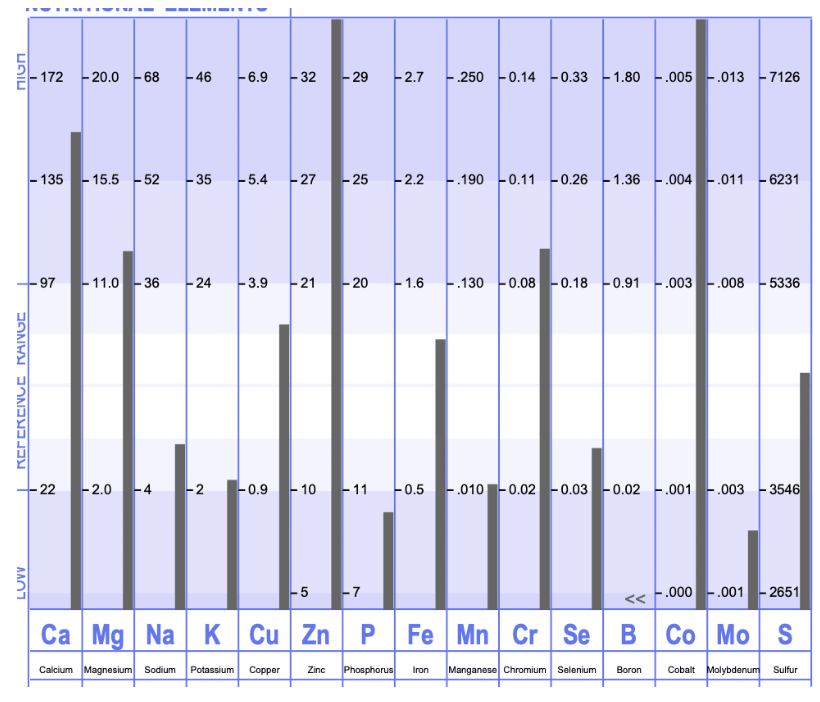Tina joined the Master Your Minerals course and did 1:1 work with me when she could not find answers to her thyroid and hormone concerns. She had been diagnosed with Hashimoto’s a few years earlier and had steadily rising antibodies, continued to increase the dose of her thyroid medication, and had a short cycle, no libido, and unexplained low testosterone levels. She felt like she was doing everything “right” and didn’t understand why her thyroid health was not improving. She was still struggling with fatigue, constipation, and not feeling like herself day after day.
Tina was very motivated and proactive with her health. As soon as she got the Hashimoto’s diagnosis, she got busy researching different ways she could support her body. This led to her experimenting with a lot:
She would often feel better when she made a dietary change but after a few months, she went right back to where she started. This is very common since dieting extremes often lead to under eating and higher stress hormones, which can boost energy and make you feel better initially, but then lead to burnout.
Tina had some big stressors from her past related to divorce, moving, job changes, and a sick family member. When we look at the time before she was diagnosed with Hashimoto’s, we can see that she had many years of chronic stress leading up. She was also under eating, over exercising, and addicted to intense workouts. She had a VERY hard time taking rest days and often would go weeks without a full day off. Her stress history was significant and then looking at current stressors is also important because we want to know what can we change right now or at least work toward in the future.
This was a lot to work on and happened over the span for 3-4 months. We did an initial HTMA, but didn’t do any other testing until after that 4 month mark since she really needed a stronger foundation.
Overall, Tina’s HTMA was not surprising. She looked incredibly stress (see the high levels of minerals below) and she was, so her test results made sense and matched up with her main health concerns and symptoms. The high calcium and low potassium was making it difficult for her body to use the thyroid hormones that she was taking and the ones her body was making. The high zinc is a sign of inflammation, likely coming from her gut. She was not supplementing. the high iron and chromium gave some insight to look into her iron status. We did blood work and she did have very high iron. We worked on addressing this after we improved her other minerals (learn more in this week’s bonus episode in patreon.com/hormonehealingrd). The high cobalt is a sign of liver stress, which was not surprising since she struggled with constipation and had high iron.
After going through her test results, I recommended she stop pretty much all of her supplements. Her body needed a break. She worked on increasing potassium from food. We also added in some liver support and boron for joint pain (her boron was low). We worked on increasing protein since phosphorus was low and her food journal showed low protein intake. We did add digestive bitters to help her digest it better since constipation is a sign that she likely isn’t making enough digestive juices. This was step 2 after she worked on the initial nutrition and lifestyle recommendations. She went on to also do an iron panel and GI map after 4 months. I will go through these and what we did in the bonus episode for Patreon (patreon.com/hormonehealingrd). Her HTMA retest was completed over 9 months later because we wanted to wait until we addressed her iron and gut issues before retesting.

Tina saw improvement in energy, BMs, and mood almost right away. Especially after working on phone scrolling and light exposure in the morning. She was able to improve her relationship and reduce fear around food. She noticed reduced joint pain after about 2 months. Her antibodies went from over 700 to below 200 in 6 months. One downside was her cycles continued to shorten for the first 3 months then around month 4 of working together and implementing changes it started to lengthen. She ended up with a 27 day cycle, which is a huge win. Her libido took the longest to improve. It wasn’t until her body fat increased a bit, which was hard for her but the pros out weighed the cons.
Listen more about this case study on the are you menstrual? podcast HERE!
Are you concerned about your thyroid? Check out my free thyroid training to learn more about how you can support your thyroid better.
reminder: i’m currently taking on 1:1 clients. if you’d like to explore what it would be like to work together and if we are a good fit, fill out this form to get more details!
